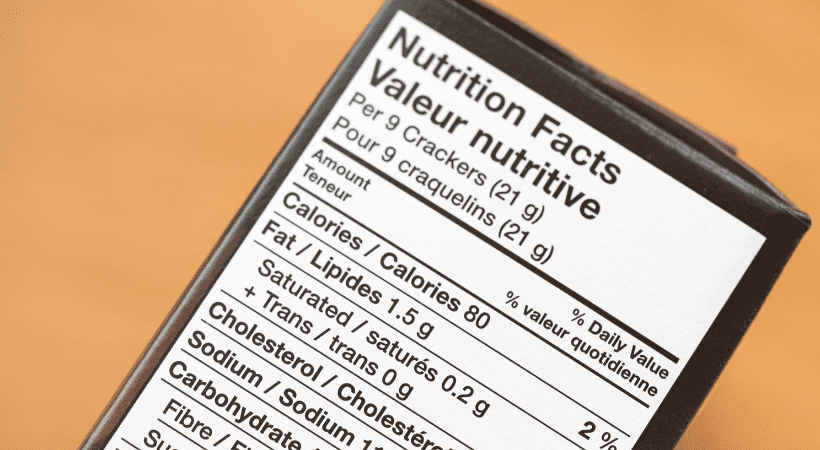Alcohol Alcohol Labelling Requirements UK Explained
Alcohol Alcohol Labelling Requirements UK Explained
Clear and accurate labelling is a crucial aspect of the food and beverage industry, ensuring consumers have access to essential information about the products they are purchasing. This is particularly true when it comes to alcohol, where the potential for misuse or misunderstanding can have significant health consequences.
With this in mind, the UK has rigorous alcoholic beverage regulations to promote transparency, responsible consumption and safety. Below, we explore the alcohol labelling requirements in the UK and how businesses can comply.
If you’re in need of further support with the labelling of alcoholic products, find out about outsourcing your labelling compliance to Ashbury.
Table of Contents
- Current Alcohol Labelling Requirements
- How Alcohol Labels Differ From Standard Food Labels
- What’s the Minimum Percentage of Alcohol Required to be labelled?
- January 2023 Updates to UK Alcohol Labelling Regulations
- Volume Labelling Regulations for International Markets
- Why is Correct Alcohol Labelling Important?
- Consequences of Failing to Comply with Alcohol Labelling Requirements
- Further Support With Alcohol Labelling Compliance
Current Alcohol Labelling Requirements
The current regulations for alcohol labelling in the UK are overseen by the Food Standards Agency (FSA). They require that all alcoholic beverages display the drink name, the alcoholic strength (if over 1.2%), any potential allergens and the date of durability if applicable (not required if alcoholic strength is more than 10%).
The volume of alcohol must be accurate and displayed to one decimal place. For example, it’s +/- 0.5% for beer and wine with a strength of up to 5.5% volume, or +/-1% for beer and wine with a strength greater than 5.5% volume. In the case of beverages containing macerated fruits or plants, it’s +/-1.5% and +/-0.3% accuracy for all other alcoholic beverages.
While it’s not mandatory, many companies choose to include recommendations on alcohol limits, alcohol units per container and warnings about drinking while pregnant. Although these health warnings are not compulsory, they are strongly recommended by the government and organisations such as Drinkaware and The Portman Group.
The Portman Group’s code of practice states that alcoholic beverages must be marketed responsibly, ensuring that names, packaging and promotional materials do not encourage irresponsible or illegal drinking. They offer a free marketing toolkit on how to display voluntary information.
How Alcohol Labels Differ from Standard Food Labels
Alcoholic drink labels differ significantly from standard food labelling. The Alcohol by Volume (ABV) is a mandatory requirement that must be clearly stated in the same field of vision as the name and net quantity of the food.
In terms of nutrition, energy must be calculated using energy conversion factors specific to alcohol (29kJ/g and 7 kcal/g for ethanol). Only nutrition claims related to alcohol or energy content are permitted and health claims are entirely forbidden. Implied and non-specific health claims such as ‘better for you’ are also prohibited.
For example, a popular beer brand in the UK faced legal challenges in 2021 for its tongue-in-cheek paid-for post on Instagram promoting a Clean & Press Hard Seltzer. The Advertising Standards Authority (ASA) challenged that the claims ‘only 90 calories per can’ and ‘no carbs or sugar’ were nutrition claims that are not permitted for alcoholic drinks.
Additionally, the claim ‘a little bit of alcohol’ implied that the drink was low in alcohol, which was not a permitted claim for the drink because it had an ABV of 5%. The advertisement was therefore banned from appearing again, highlighting the importance of strict adherence.
What’s the Minimum Percentage of Alcohol Required to be Labelled?
In the UK, alcoholic beverages need to be marked with their alcoholic strength when it’s above 1.2%. The strength has previously been labelled to a maximum of one decimal place in an ‘X% vol’ format but can now use one of the following formats such as ‘X% vol’, ‘alc X% vol’, and ‘X% alc/vol’.
The term ‘low alcohol’ refers to products containing an alcoholic strength of 1.2% or less, while ‘alcohol-free’ means the alcohol has been extracted to an extent where the drink contains an alcoholic strength of 0.05% or less – this number varies across countries. For more information, read our article on Low2No Alcohol compliance.
January 2023 Updates to UK Alcohol Labelling Regulations
Driven by free trade agreements with the likes of New Zealand, the UK Parliament published the Alcoholic Beverages (Amendment)(England) Regulations 2023. Changes include:
- UK wine that was marketed with whole or half units e.g. 12% or 12.5% and now is allowed to any decimal place e.g. 12.2%.
- When there are two or more grape varieties listed on a wine label, the named varieties must total 95% of the wine (instead of 100% which it was previously).
- There is more flexibility on how the words ‘alc’, ‘alcohol’, ‘vol’ and ‘volume’ appear on a label. Previously, the format was ‘X% vol’, which may be preceded by ‘alc’ (or the full word equivalents). Now there are options to also use the format ‘% alc/vol’.
Volume Labelling Regulations for International Markets
It is important to remember that different markets set different limits for alcohol volume which will impact how you label your products. Do you research to ensure your label is adapted according to local rules.
Why is Correct Alcohol Labelling Important?
There are several key reasons why accurate alcohol labelling is so important:
Customer Transparency
Alcohol labels provide detailed information about the product including the nutritional content and potential allergens. This transparency allows consumers to understand what they are purchasing and make informed choices based on their personal preferences and dietary needs.
Alcohol Consumption Awareness
Clear labelling on alcoholic beverages helps individuals to determine the amount of alcohol they are consuming, enabling customers to track their alcohol intake and make responsible decisions regarding their alcohol consumption.
Dietary Requirements and Allergies
For individuals with specific dietary requirements or allergies, alcohol labels provide vital information to identify products suitable for them. For instance, a vegan consumer may seek wines that are not fined with animal products. Accurate labelling facilitates this selection process.
Legal Requirements
Lastly, correct labelling is also a legal requirement. If a company fails to adhere to these regulations, they risk facing significant legal and reputational consequences.
Consequences of Failing to Comply with Alcohol Labelling Requirements
The consequences of failing to comply with alcohol labelling requirements can be severe. Incorrect or missing information could put customers at risk, particularly those with specific dietary requirements or allergies.
Legally, non-compliance can result in fines or even prosecution. Breaches of these regulations can also severely damage a brand’s reputation and consumer trust, leading to potential losses in sales and market share.
Further Support With Alcohol Labelling Compliance
The correct labelling of alcoholic beverages in the UK is not just a matter of regulatory compliance. It is a crucial factor in maintaining customer trust and promoting responsible drinking.
At Ashbury, we understand how food and beverage labelling regulations can feel confusing and hinder the launch of your products. Our team of food labelling compliance experts can help you tackle regulatory alcohol requirements while remaining competitive in your marketing and product positioning.
Looking to launch an alcoholic product in the UK or global markets? Get in touch for advice tailored to your business.
Next reads
The Peanut Diaries: School and Social Occasions
The Peanut Diaries: Navigating Social Events and Celebrations with Food Allergies
The Peanut Diaries: A Parent’s Journey to Uncovering their Child’s Allergy
Redefining Healthy: What the FDA’s New Rules Mean for Food Labels and Nutrition Claims
Keep up to date with our latest insights
Subscribe to our mailing list to stay in touch with the latest news, insights and updates from Ashbury





